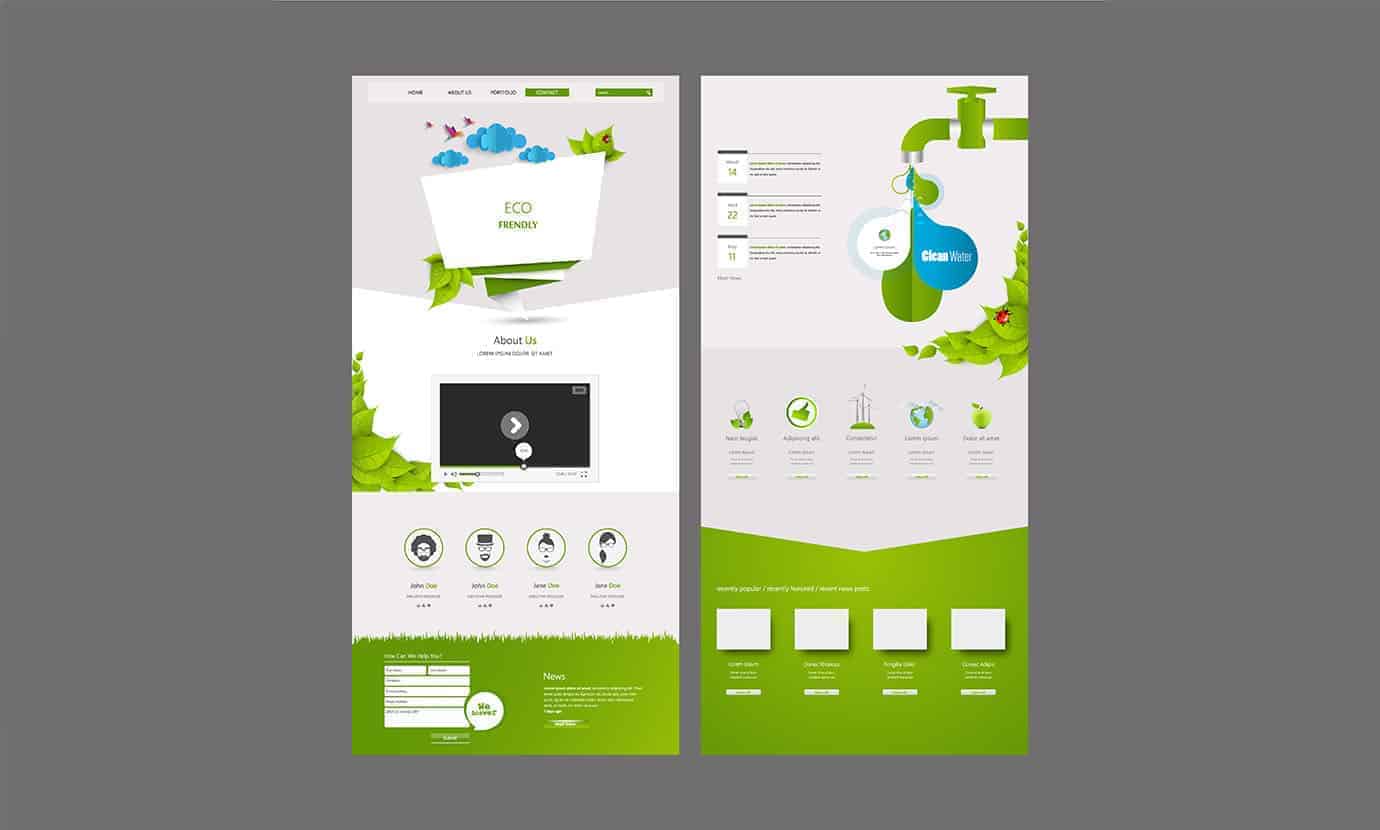Website Design Best Practices for Faster Load Times and Improved User Experience
Website Design Best Practices for Faster Load Times and Improved User Experience
Blog Article
Modern Site Design That Captures Focus and Converts
In a significantly digital landscape, contemporary site layout has emerged as a crucial element in capturing user interest and driving conversions. As we check out these essential parts, it becomes clear that comprehending their interaction can dramatically affect a website's performance and user fulfillment.
Value of Visual Pecking Order
Aesthetic pecking order is an important component in web site style, as it guides customers' attention and enhances their overall experience. By purposefully arranging material, developers can guide users to one of the most important details initially, consequently increasing involvement and enhancing usability. Effective aesthetic hierarchy uses different methods, consisting of dimension, spacing, color, and contrast. Larger components naturally draw the eye, while contrasting shades can highlight key messages, making them stand apart among even more restrained elements.
Including a rational flow in material arrangement is necessary; for example, positioning one of the most essential details at the top of a page promotes prompt recognition. Regular usage of typography, such as varying font sizes and designs, helps develop a clear content structure. This organization not only help in navigation however also develops trust, as customers really feel much more comfortable when they can quickly locate what they are searching for.
Ultimately, a well-executed visual pecking order not only boosts visual allure yet additionally dramatically impacts user behavior. By prioritizing essential aspects and making sure a smooth experience, developers can successfully convert site visitors right into clients, strengthening the value of this fundamental layout concept in contemporary site development.
Responsive Style for All Devices
Developing a smooth experience across numerous tools is important in today's digital landscape, where users access web sites from tablets, desktops, and smartphones alike. Receptive layout is an essential approach that makes sure web sites adapt fluidly to different display positionings, resolutions, and dimensions. By using adaptable grids, pictures, and CSS media questions, designers can produce layouts that keep visual honesty and functionality, despite the tool being used.
The relevance of responsive design expands past looks; it directly influences individual engagement and conversion prices. A web site that operates well on all gadgets encourages longer brows through and decreases bounce prices, as individuals are more probable to interact with material that is simple to browse. In addition, internet search engine, especially Google, focus on mobile-friendly websites in their rankings, making receptive layout an important component of search engine optimization (SEO)
Including responsive design not only boosts user experience however additionally improves the advancement process. By producing a solitary website that functions throughout devices, services can conserve time and sources compared to developing separate mobile and desktop computer versions. Eventually, responsive layout is a fundamental technique for modern site style, ensuring ease of access and contentment for all customers, despite their device.
Engaging Interactive Elements
While a responsive design prepares for a useful site, including interesting interactive elements is important for catching customer interest and cultivating much deeper connections. Website Design. Interactive aspects, such as animations, quizzes, and clickable infographics, produce a more dynamic customer experience, motivating site visitors to invest more time on the site
Incorporating find more interactive attributes can also guide users via complicated info, making it much easier to absorb material. As an example, interactive sliders can highlight product variations, while ingrained video clips can give demos or testimonials that reverberate greater than fixed images or message. Gamification methods, like rewards for finishing tasks or engaging with web content, can enhance customer motivation and retention.
Reliable use of interactive components not only enriches the individual experience yet can likewise bring about higher conversion rates. By making communications satisfying and helpful, services can grow a sense of commitment and count on with their target market. It is necessary to stabilize interactivity with performance; excessively complicated attributes might hinder site speed, adversely influencing user fulfillment. Ultimately, incorporating properly designed interactive components can considerably raise a website's effectiveness, driving involvement and conversions in today's affordable electronic landscape.
Streamlined Navigation Practices
Effective navigation is a foundation of any successful web site, as it directly influences user experience and content availability. Streamlined navigation practices ensure that individuals can quickly find info, enhancing their communication with the website. A well-structured navigation menu should be user-friendly and easy, commonly including a restricted variety of primary groups to avoid frustrating site visitors.
To achieve streamlined navigating, designers must focus on a hierarchical framework that practically organizes content. Carrying out breadcrumb trails can give individuals with context about their present location within the website, enabling seamless backtracking. In addition, making use of drop-down explanation menus can effectively conserve room while still giving accessibility to subcategories.
Responsive layout is critical, as navigation should be useful across all gadgets (Website Design). Mobile customers, in certain, take advantage of touch-friendly food selections and collapsible areas that preserve usability without jeopardizing looks

Efficient Call-to-Action Techniques
A well-crafted call-to-action (CTA) is vital for guiding customers toward preferred outcomes on a web site, as it encourages them to engage with content or buy. To maximize their performance, CTAs ought to be clear, engaging, and tactically placed throughout the site.
First, make use of action-oriented language that communicates seriousness or value, such as "Get Begun," "Join Currently," or "Claim Your Discount rate." This language not just encourages individuals yet likewise establishes clear expectations concerning the following steps.
Second, think about layout elements; CTAs ought to stand out visually with contrasting colors, adequate whitespace, and noticeable positioning. A button that is easy to see and click rises the probability of individual communication.
In addition, personalizing CTAs based on individual habits or demographics can considerably boost involvement. Tailored messages resonate much more with individuals, driving greater conversion rates.

Conclusion
These parts jointly improve individual experience, making sure that site visitors continue to be engaged and encouraged to discover material even more. By prioritizing these layout concepts, organizations can dramatically boost individual retention and conversion prices, inevitably leading to higher success in the electronic landscape.
In a significantly digital landscape, contemporary web site design has actually emerged as a pivotal variable in catching individual attention and driving conversions.Visual hierarchy is an essential component in website design, as it overviews users' focus and improves their general experience.The value of responsive design expands past appearances; it directly influences individual engagement and conversion prices.Integrating receptive style not see here now just improves customer experience however also streamlines the development procedure. Inevitably, receptive style is an essential technique for modern-day website layout, guaranteeing access and contentment for all users, regardless of their tool.
Report this page